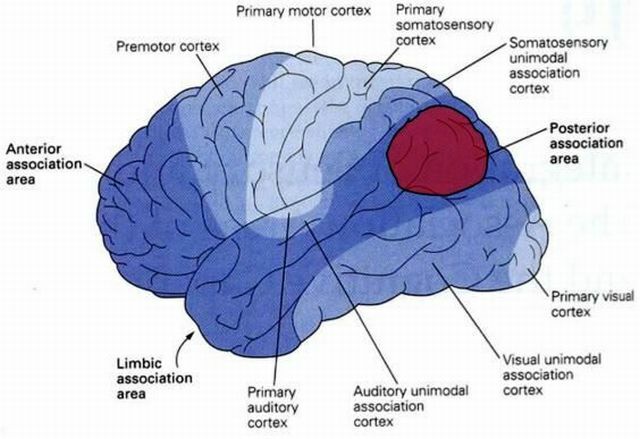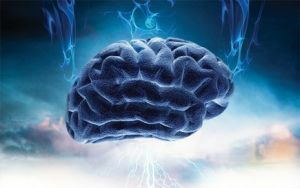 Diagnosis of brain dysfunction, delivered by a doctor, in most cases very scary patient.
Diagnosis of brain dysfunction, delivered by a doctor, in most cases very scary patient.
The medical term "dysfunction" is a failure in the functioning of any function in the human body. In this particular case, he points out problems with the tissues of the brain stem.
This is an anatomical site that controls almost all vital to the life processes of the body. The trunk regulates heartbeat, body temperature, breathing apparatus, processing of food elements, etc.
Contents
- Primary diagnosis
- MMD and other types of brain dysfunction
- Median structures
- Barrel failure
- Venous insufficiency
- Dienceptic structures at risk
- Far-reachingconsequences
Primary diagnosis
In situations in which the human brain receives damage of a certain nature, almost always the damage is received by the trunk. This leads to various failures in the performance of brain functions. The most traumatic birth, hypoxia, severe stroke, bruise or concussion.
It is noteworthy that failures can be clearly expressed by a certain symptomatology, but sometimes it is necessary to diagnose disorders using various research methods.
When a doctor suspects of brain dysfunction, most often a direction is given for computed tomography. This method of diagnosis can detect brain damage, including in the trunk portion, through layered display on the monitor. 
It happens that the diagnosis does not require the use of a tomography, usually it affects situations in which there is no reason to suspect the presence of trauma.
In such cases, the neurologist recommends the patient to do ECHO-EG.This method of diagnosis is based on the sequential recording and examination of electrical signals of the brain. Irritation is often observed when structures are damaged, it indicates irritation of one of its zones.
MMD and other types of brain dysfunction
Relatively the rest of the body, the brain mass is small, its average weight in an adult is within 1.5 kg. However, this does not prevent him from controlling most of the processes that are responsible for the viability of the body.
Despite its importance, the brain is very vulnerable. Even small violations at birth can greatly affect the development of the child, his vision of the world, the emotional state.
Today, the diagnosis of minimal brain dysfunction( MMD) is put about 25% of patients in childhood. Violations are manifested in both the neurological and psychological spheres.
Most symptomatically manifests itself in school age, when a child goes to school. The consequence is frequent headaches, excessive mobility and hyperactivity in children, a high level of nervousness. Most children talk about poor memory and fast fatigue. There are often problems with development, poor concentration, motor skills and speech suffer.
Causes of MMD:
- difficult delivery;
- pregnancy was severe;
- infectious diseases;
- prolonged action of toxins on a woman's body;
- improper care of a child in infancy.

Violations can also be caused by a brain injury, which was triggered by a stroke, accident, bruise, illness.
In adults, different parts of the brain can be affected by a negative effect. Brain dysfunction can be found in the field:
- diencephalic structures - control metabolic processes, human sleep, temperature, appetite;
- of the stem tissues - are responsible for the regulation of the main life support processes of the person, appetite, tonus of muscle fibers and respiration;
- of the median structures - participate in the processes of vital activity, control the emotional background of the organism, vegetative processes of the National Assembly;
- venous - the most noticeable symptoms of which are severe fatigue and headaches.
Median structures
This area is responsible for the stable operation of the vegetative man's NA, adjustment of sleep processes and emotional background. Often, a violation in this area is caused by an ancestral or craniocerebral trauma. The diagnosis is made when studying EEG.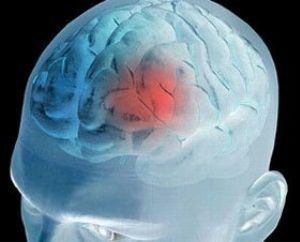
Dysfunction of the median structures of the brain is manifested in thalamic disorders, as well as with a group of neuroendocrine syndromes:
- poor sensation on the body and face;
- understated pain threshold;
- tremor;
- sharp, unnatural laughter or crying;
- Premature puberty;
- disorders in the endocrine system.
Trunk failure
It is the brain stem that is responsible for the most important life-support processes - cardiac muscle contractions, body temperature regulation and others. Dysfunction of the brain stem structures causes:
- craniocerebral trauma;
- birth injury;
- concussion and injury.
Often the diagnosis is combined with visual changes - the patient may have a change in facial bones, improper formation of the jaw. There is a possibility of developing asthenia, which affects speech development. There are also problems with muscle tone, excessive sweating, salivation.
With the timely diagnosis and correct treatment of the consequences of violations can be reversed, and functionality at least partially restored.
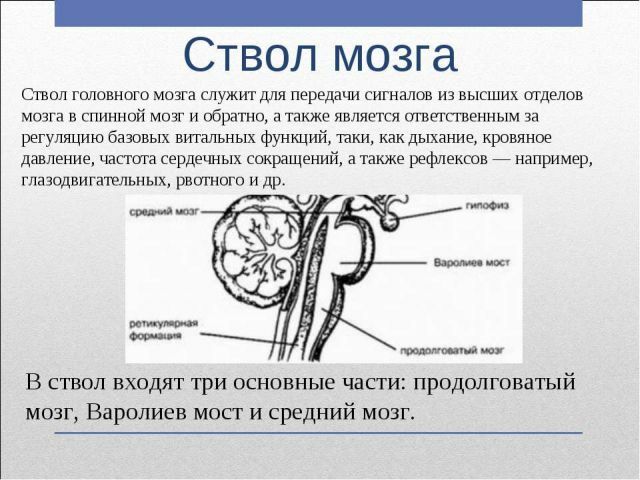
Venous insufficiency
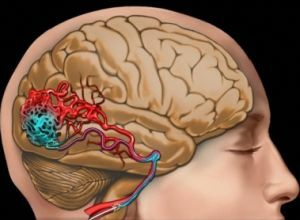 Venous dysfunction is characterized by damage to the vascular outflow of the brain. It can be caused by trauma, heart failure. Provoke the development of the disease can vein thrombosis.
Venous dysfunction is characterized by damage to the vascular outflow of the brain. It can be caused by trauma, heart failure. Provoke the development of the disease can vein thrombosis.
This disorder is characterized by the presence of pulsatile headaches, sudden pressure spikes, migraine.
Often headaches are accompanied by a feeling of nausea, vomiting, convulsive syndrome. Other symptoms:
- pre-fainting condition;
- syncope;
- unhealthy color of face;
- flies and a shroud in the eyes;
- sluggishness in the morning;
- soft tissue edema.
Diancephal structures in the risk area
Disturbances can spread to different parts of the brain, which affects the symptoms, as when dealing with the intermediate department in the field of diencephalic structures, dysfunction is characterized by problems with metabolic processes, sleep disorders and a clinical picture characteristic of other areas.
Irritation is manifested by brain irritation. The symptomatology will vary depending on the affected area. Usually, irrigation is not a separate disease, but a consequence of the course of another disease( tumor, neuroinfection, etc.).
Epileptic seizures are the result of dysfunction of the midline and stem structures of the brain. Also, violations of speech, vegetative system are detected. With lesions of the lower divisions, there may be problems with consciousness( confusion with time), attention, memory.
Far-reaching consequences of
Dysfunction of the brain tissue represents a great danger to humans. In particular, the trunk is responsible for important processes in the work of the entire  organism.
organism.
In case of violations in its work, one should definitely expect the development:
- problems with speech, dysarthria;
- dysphonia;
- of dysphagia.
When a lesion occurs in the trunk, paralysis may develop.



